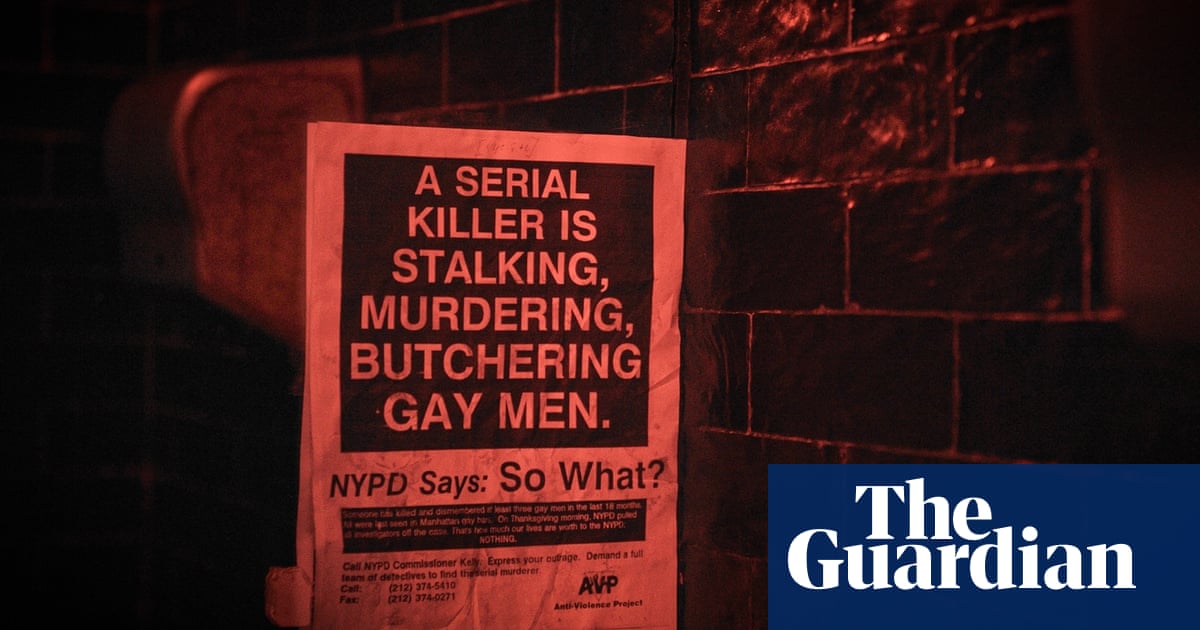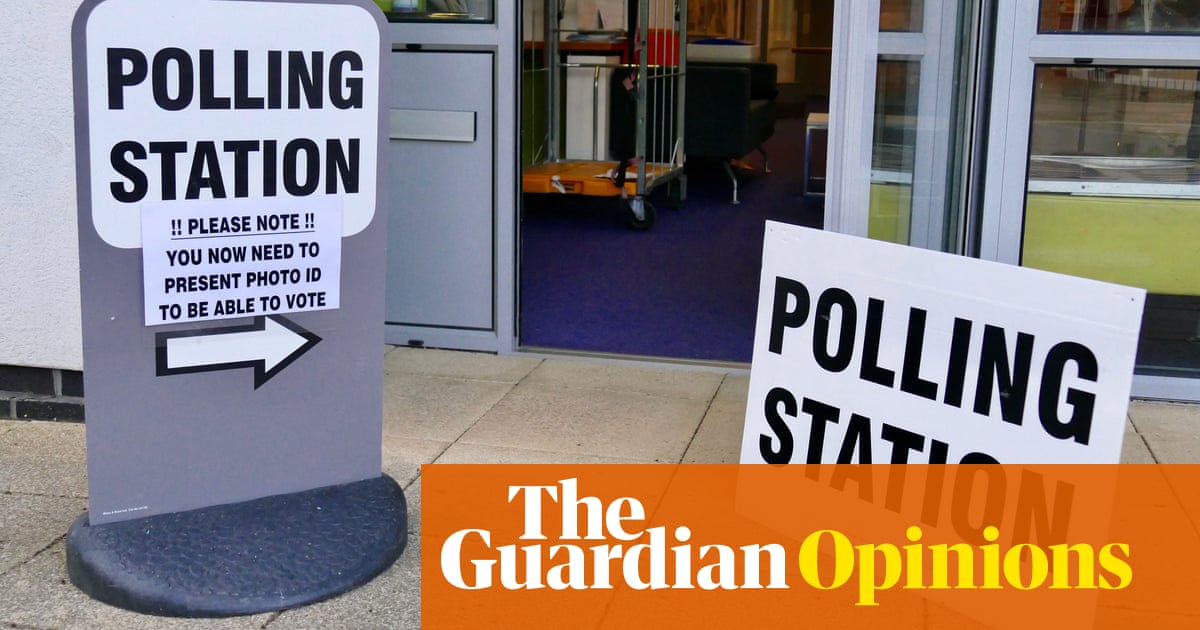
In the piercing, packed new docuseries Last Call, the activist Matt Foreman finds a chilling way to connect the shifting, multi-layered experience of being queer or trans: “If there’s one thing that is universal, in my experience, to LGBTQ people, that we all know intuitively, it’s violence.”
In early 90s New York City, that violence could find you in many forms. It could be via a deadly disease, one that had been around for a decade yet was still woefully under-researched and any infrastructure surrounding it maliciously under-funded (between 1990 and 1993, there were over 116,000 Aids deaths in the city). It could be on the street, a slur casually turning into an assault (in the first nine months of 1991, there were 600 anti-LGBTQ+ attacks in the West Village and Chelsea alone). Or it could be from the cops, gleefully over-policing a community that the NYPD had long treated as sub-human. As an exhausted and emotional gay man says in archival footage: “Do you know what it is to be assaulted for being alive?”
It’s a grim picture by itself but that era also saw another threat enter the frame, quietly and gruesomely picking off gay men already living on a knife’s edge.
The Last Call killer, as the media came to call him, mostly found his victims in the one place his victims used as safe refuge: gay bars. He would stalk, seduce and savagely murder, leaving body parts scattered out of state, terrifying the community and baffling the authorities. In the space of four, tightly contained episodes, Last Call retraces his steps and contextualises his killings, expanding focus from one man to thousands of them to explain how he got away with it for so long and why his story is emblematic of a time, a place and a bigotry.
“I passed on the project because I don’t do true crime,” says the director Anthony Caronna over Zoom. “I wasn’t really interested in doing true crime and I was also really worried about re-victimising the community.”
But after meeting with the producer Howard Gertler, whose credits include 2012’s sprawling and sensitive HIV/Aids doc How to Survive a Plague, he realised that by lasering in less on the gory details and more on the bigger picture, the macro over the micro, there was a way to make something uniquely important.
Based on the book by Elon Green, the HBO series is a richly detailed, often devastating, watch. We hear from a daughter whose closeted father was outed only in death, who “went to New York on a business trip and never came home”. We hear from a man, drugged and cornered, who somehow managed to get out alive. We hear from the activists desperately ringing the alarm to the same cops they were being targeted by. The makers worked with the queer historian Nikita Shepard from Columbia University to construct a clear timeline matching murders with local history, ensuring authenticity.
It’s frequently infuriating, as a trail of apathy and incompetence takes us back to an unhinged killer who could have been stopped decades earlier and forward to a future that shows that, for some, few lessons have been learned.
“Righteous anger was a part of it,” says Gertler, of making the project as a gay man. The pair had “trauma training” before production and while there’s restraint used in confronting the gnarlier specifics at times when others would have used overkill, it remains a difficult series to watch and was an even more difficult series to make. “It definitely took a toll,” says Caronna, who has previously worked on 2021’s Pride docuseries and 2017’s portrait of nightlife maven Susanna Bartsch. “There were really high highs and really low lows during the process of making this because you’re processing it all and you’re processing it through your own queer lens. You’re also angry, you’re angry that this perpetrator was able to do this for almost 40 years.”
Alongside interviews with the families and friends of the victims, the series also speaks to the detectives involved with the case, located in different states and counties due to where the victims were found. There’s an uneasy defensiveness to the tone, clueing us in on attitudes at the time, still depressingly unchanged. “The gay thing wasn’t really relevant to the investigation, apart from who might have killed him and where he hung out,” one says, straight-faced. At another point, a detective turns the questions back to ask: “Why is the emphasis on the gay part?”
“I think we understood going in that there was the possibility of there being tense moments, of people feeling like maybe fingers were being pointed but we just sort of navigated those moments as gently as possible,” Caronna said. “I think the lived experience of being queer helped us navigate those uncomfortable moments because we oftentimes have to live through those uncomfortable moments.”
While the authorities dragged their feet, missing important leads and claiming ignorance over how to handle the case (“I don’t know about where all the gay bars are in New York City,” one says, a sense of rigid masculine pride underlying) and the media chose to either ignore or salaciously exploit, it was left up to the same activists who had helped the community through the early stages of the HIV epidemic and continued to protect them from other forces to do the work. The Anti-Violence Project was born out of frustrations with the brutality inflicted on LGBTQ+ New Yorkers and the lack of empathy shown by the NYPD. When the Last Call killer came onto the scene, the group tried to collaborate with the police and when that proved difficult (calls left unanswered, information unshared), they took matters into their own hands, flyering bars and spreading the word.
“Institutions are no substitution for community,” Gertler says. “We’re not the only group that understands that. I guess our story illuminates that but is also reflective of that in terms of where we are today.”
Today comes in the middle of a bleak year for LGBTQ+ Americans. To date, in just over six months, there have been 525 discriminatory laws introduced, the Department of Homeland Security has said that threats of violence have substantially increased (LGBTQ+ people are nine times more likely to be the victim of a hate crime than their non-LGBTQ+ counterparts) and in June, the Human Rights Campaign declared a state of emergency for LGBTQ+ people living in the US.
“We’re hearing the same things over and over again by Ron DeSantis,” Caronna says, comparing the rhetoric of now to that of before, pushed by the hateful singer turned vocal homophobe Anita Bryant, included in the series. “It’s this legacy of homophobia that’s still very present and then we get people like Trump who stoke the flames of homophobia because they know it’s a wedge issue, because they know that their fanbase will love it if they come after trans people or they come after gay people. It’s all about power, it’s all just people knowing how to stoke the flames of homophobia for power.”
Last year also saw a story that chillingly mirrored elements of the Last Call killer’s case, with a spate of men targeted at New York gay bars before being murdered. Again, the authorities were lethargic in responding, the media similarly slow and it was left up to grass roots community organisations to flyer and warn.
Increased, if often tokenised, media visibility and important legal progress aside (some of which many states continue to work hard at rolling back), it remains an unwelcome world for queer people. “I remember walking to two of the interviews for this show and getting called a faggot twice on two different occasions,” says Caronna. “It happens to me quite often.”
But what Last Call also does is show the undying importance of the gay bar, even to those who might not understand its need (straight colleagues and friends have asked me why gay bars still exist when “Every bar is a gay bar now” and similarly, maddeningly, “Is coming out even a thing anymore?”). To both Caronna and Gertler, especially at a time of intensified homophobia, the gay bar is as vital as ever.
“I think we all have our own lived experiences and my lived experience happens to be the closest with the gay people that I’m around,” Caronna says. “So being in those spaces is the first time in the week that I really get to, if I had hair, let my hair down. It’s the first time I can be myself without feeling the danger of ridicule or physical danger. I can just be with people that I know feel similarly to me.”
Gertler adds: “I guess it’s a cliche but the bars are where you go to find community. When Matt [Foreman] said I don’t think straight people understand what it’s like to walk into a gay bar, we were like we need to put this line in because it actually is a good way of framing it. Just to say to some parts of the audience, you may not understand and it’s okay that you don’t understand and we’ll invite you in with this crazy montage and you’ll wish you’d been there.”
Last Call: When a Serial Killer Stalked Queer New York begins on HBO on 9 July with a UK date to be announced












